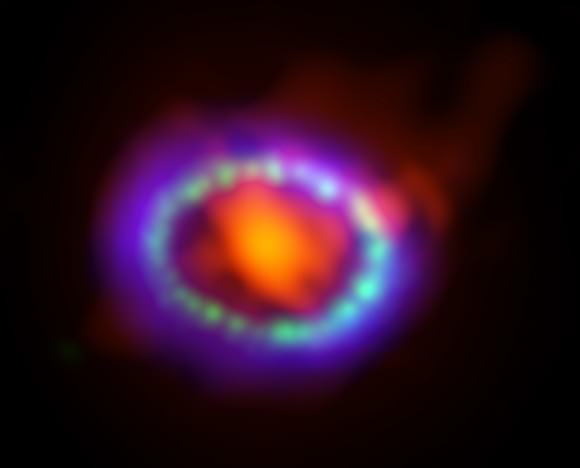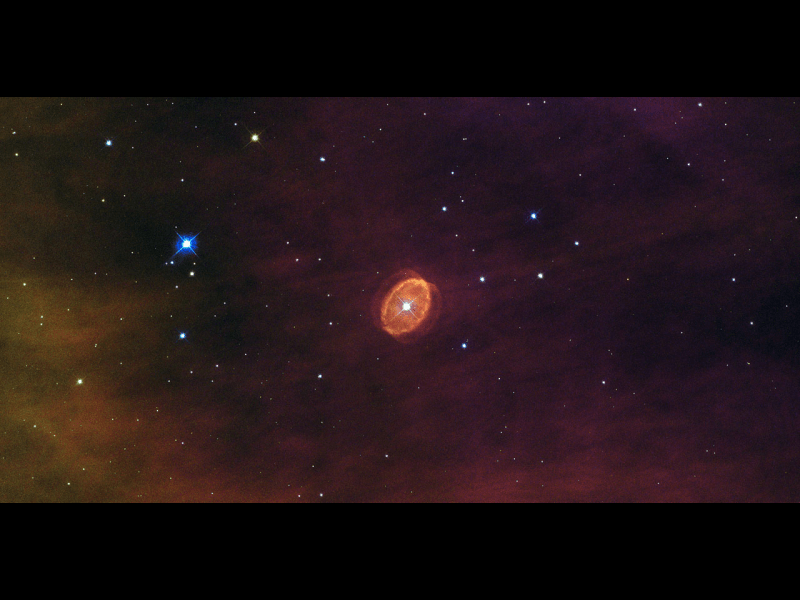No, this isn’t a distant view of the London Eye. This nebula with a giant star at its center is known as SBW2007, located in the Carina Nebula. Astronomers say it has striking similarities to a star that went supernova back in 1987, SN 1987A. Both stars had identical rings of the same size and age, which were travelling at similar speeds; both were located in similar HII regions; and they had the same brightness. We didn’t have the telescopic firepower back before 1987 like we do now, so we don’t have a closeup view of how SN 1987A looked before it exploded, but astonomers think SBW2007 is a snapshot of SN1987a’s appearance, pre-supernova.
Of course, no one can predict when a star will go supernova, and since SBW2007 is 20,000 light-years away, we don’t have any worries about it causing any problems here on Earth. But astronomers are certainly hoping they’ll have the chance to watch it happen.
SN 1987A is the closest supernova to that we’ve been able to study since the invention of the telescope and it has provided scientists with good opportunities to study the physical processes of an exploding star.
Below is the latest image of SN 1987A, courtesy of the National Radio Astronomy Observatory. You can read about their recent findings here, where they were able to image the newly formed dust from the explosion.


